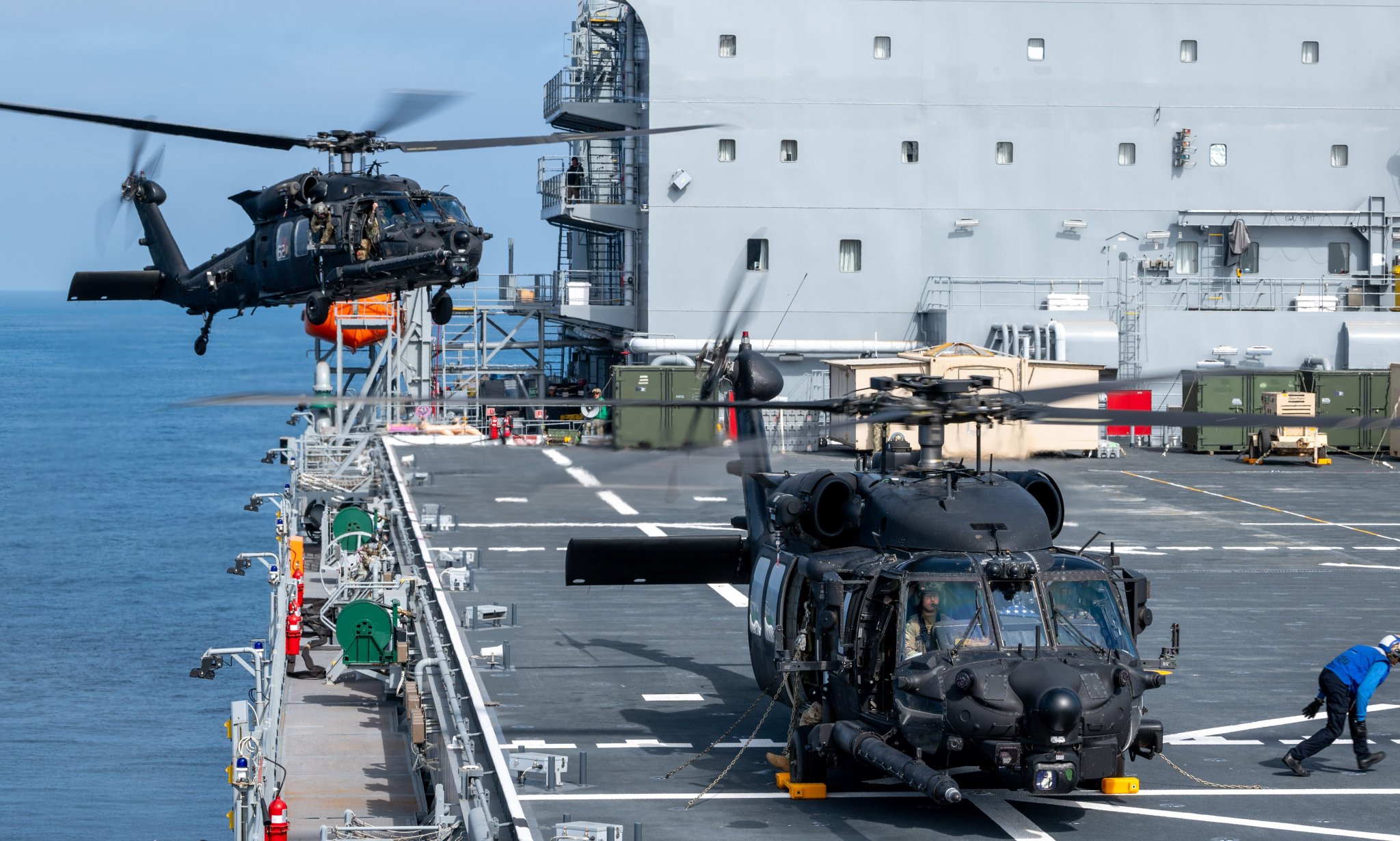

Some of America’s elite special operations forces held a major exercise off the coast of Alaska from July 5 to Aug. 2, 2024, bringing together some of the most secretive units and equipment from the Army, Navy, and Air Force.
Photos released by the Pentagon this week show that the exercise brought together stealthy MH-60 helicopters from the Army’s 160th Special Operations Aviation Regiment, Naval Special Warfare SEALs, Combatant Craft Assault boats and ScanEagle drones and rarely seen Air Force C-146 Wolfhound transport aircraft. Officials with Northern Command told Task & Purpose that the exercise also included an Austere Resuscitative Surgical Team from the Army 528th Special Operations Sustainment Brigade.
“Special Operations Command North has discovered that in each location in which we operate there are unique challenges to overcome, especially in the extreme cold weather environments of the High North,” a NORTHCOM spokesperson said. “Some of these challenges include how to manage liquids, from water to medical supplies, and how to keep aircraft and other ground maneuver equipment functioning in sub-zero temperatures.”

Officials said the exercise saw no interference from Russian military assets. But the troops assumedthey were being watched.
“Special Operations Command North operates under the assumption our activities are being observed,” the spokesperson said.
The pictures capture special operators training on and around the USS John L. Canley, a Navy Expeditionary Sea Base ship.. Built from the converted hull of a commercial cargo ship, the Chesty Puller-class ship is designed to host special ops and amphibious assault units, with a wide flight deck and specially designed launching berths for small raiding crafts. Several of the photos show Special Warfare Combatant Craft assault boats coming and going around the Canley.

Several of the photos are described as in the Bering Sea, with some labeled as off the coast Gambell, Saint Lawrence. An Air Force C-146 is pictured on the airfield at Savoonga, a village on St. Lawrence, a remote island 104 miles off of the Alaskan mainland and just 45 miles from Russian shores.
The Air Force’s small fleet of C-146s, which are flown by the 524th Special Operations Squadron, keep a low profile in the aviation world.The pictures released for Polar Dagger do not even formally identify the plane. Based on a small commercial commuter airliner known as a Dornier 328, they fly without military markings to transport small teams to remote airfields, according to an Air Force website.
Alaska is the hub of the U.S.’s growing focus on the Arctic as a future flashpoint for conflict in the Pacific. The mainland of Alaska and Russia are separated by approximately 55 miles. The unforgiving nature of the Arctic can create unique problems with gear, aircraft, and ships, but the training is likely being observed by Russia — a different kind of threat.
The Special Operations Command and Northern Command did not respond to Task & Purpose questions about the exercise.

The Army’s 160th helicopters are pictured practicing touch and go’s on the USS John L. Canley’s deck. Though 160th pilots are among the best trained in the millitary, the unit is not often assigned to ships, where flying requires specific procedures and qualifications.
The photos also show a ScanEagle drone being launched and recovered from the deck of the Canley. The ScanEagle is used by SEAL teams and other Navy special ops unit for tactical reconnaissance. The ScanEagle was used by SEALs during the rescue of Capt. Richard Phillips after pirates siezed the Maersk Alabama container ship off the coast of Somalia in 2009.
One series of photos show Special Warfare Combatant Craft Assault boats — the smallest of the Navy’s special warfare SWCCs — are shown speeding across the surface in formation. The boats carry SEALs and other operators on long open-water assaults. SEALs were ferried on the boats in operations in the Red Sea last year, including one in which two SEALs died while climbing from a SWCC boat onto a ship the team was boarding.

In the 2023 exercise, forces trained with the Alaska Native people on St. Lawrence Island to learn about their subarctic terrain survival techniques. The 17th Special Operation Squadron deployed an AC-130J Ghostrider aircraft for the first time in the remote location. The joint SOF personnel trained on helicopter insertion and extraction, carried out simulated search and rescue capabilities, and providing close air support.
“The ability for our forces to look each other in the eyes, in real-time, provides unmatched value, especially in the austere environment of the Arctic,” said Chief Master Sgt. Clint Grizzell, the former SOCNORTH command senior enlisted leader. “We’ve had some great lessons learned but it is about how we work together, joint SOF and total force, to evolve from the previous operation. We already found lessons that we’re going to build upon for the next iteration.”
The latest on Task & Purpose
- Marine recruit arrives at boot camp with glorious mop top
- Navy sinks USS Tarawa in latest Pacific SINKEX
- A USS Eisenhower pilot became the first American woman to score air-to-air kill
- Special Forces Assessment and Selection: Everything You Need To Know
- NORAD sent 3 different fighters to intercept Russian and Chinese bombers
